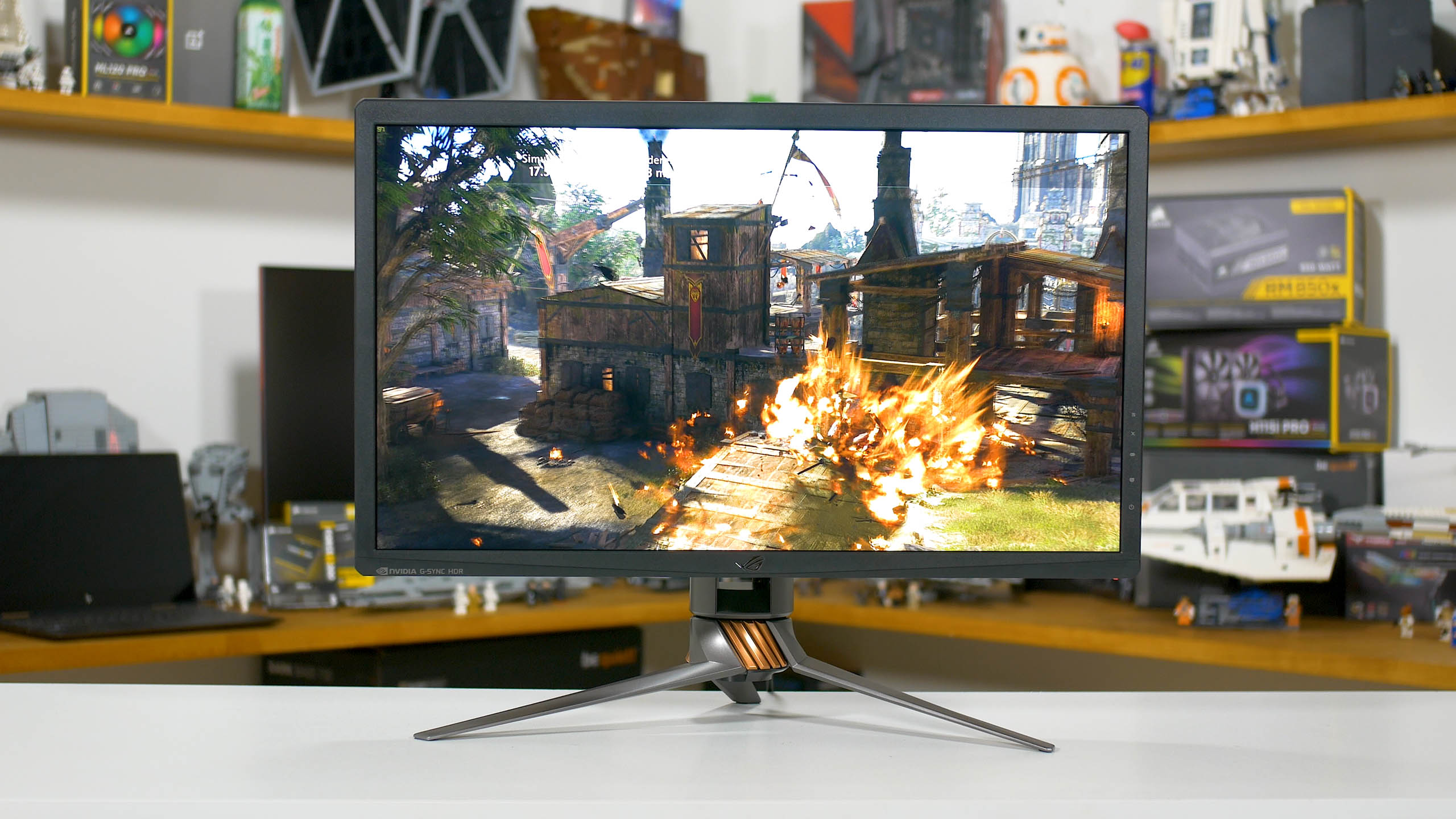SDR Performance, Response Time, Input Lag


Let's talk color performance in the SDR mode. Here we're limited to 300 nits of peak brightness and with the dynamic backlight enabled you'll get a contrast ratio around 14,600:1. At 200 nits, which we use for calibration, that's cut down to just shy of 10,000:1, which is still outstanding for LCD technology. There are some situations where content creators may want to disable the backlight, in which case again you'll revert to a standard 1,000:1 contrast ratio, but for most users as I said earlier, just keep it on.
Default Performance



Every PG27UQ comes factory calibrated to a deltaE of less than 3.0, which isn't the tightest standard, but in my testing of default performance, color accuracy was significantly better than dEs of just 3.0. The monitor produced a greyscale deltaE average of just 1.43 with a color temperature average of 6419K and near-perfect gamma, which is a fantastic out of the box result.
Saturation results revealed a deltaE average of 1.60 with 99.9% sRGB coverage, while in ColorChecker, deltaEs were entirely under 3.0 with an average of 1.58. All up this is excellent factory performance from a monitor with performance near indistinguishable from true accuracy; the most strict users may want to calibrate it further to get deltaEs sub 1.0, but anything under 2.0 is basically accurate anyway so I probably wouldn't bother attempting to deal with often troublesome color profiles just to get a very minor improvement.
Calibrated Performance



That said, I did calibrate the monitor fully using a combination of a color profile and minor OSD tweaks, and achieved average deltaEs around 1.0 or lower with a tighter gamma and CCT curve. The hit to contrast was basically irrelevant. Do note that color profiles are ignored in Windows' HDR mode, but the good news is the factory SDR performance is preserved when HDR and WCG is enabled, and Windows support for SDR tone mapping in the HDR mode is improving with each update to the point where leaving the setting enabled for desktop usage is a genuine option.

Panel uniformity was good without being great, the top left and bottom right areas are slightly off compared to the rest of the panel in my review unit, but overall uniformity is a bit better than most gaming displays. However, it's not in the same ballpark as professional grade monitors, so while Asus is providing very good color accuracy for professionals, there is still merit to purchasing a top-end pro monitor to get extreme uniformity.


For response time testing, I tested with the dynamic backlight enabled as I recommend most people leave it enabled for gaming. This actually improves response times by 1-2ms, to my surprise. I'd also recommend leaving the monitor on its default 'normal' overdrive setting, the extreme mode introduces overshoot, so my testing was done with the normal setting.
The PG27UQ uses IPS technology so naturally it will sit between TN and VA in terms of response times. Asus quotes a grey-to-grey figure of 4ms and surprisingly, I reported a 4.18ms grey to grey average which is very good for this sort of monitor. Fall times are slightly longer than rise times on average, but there were no crazily slow outliers. The black-white-black response of 9.56ms is also in line with Asus' quoted specs so no complaints here.

Input lag is slightly down on other monitors I've tested though not outrageous. In just the SDR mode with the dynamic backlight and G-Sync enabled at 120 Hz, estimated lag is around 15ms which is similar to the Acer Predator X34. As I test more monitors we'll have a wider range of data to compare with our input lag testing methodology, so stay tuned.
And a quick note on power consumption, the PG27UQ sucks down a huge 117 watts displaying a 200 nit all white image, which is well above other 27-inch monitors I've tested. A typical power consumption figure for this size should be around 60W but with the backlight and G-Sync module, that's ballooned out significantly. As for peak power consumption, this beast sucks down 300W to display a full white image at 1000 nits.
